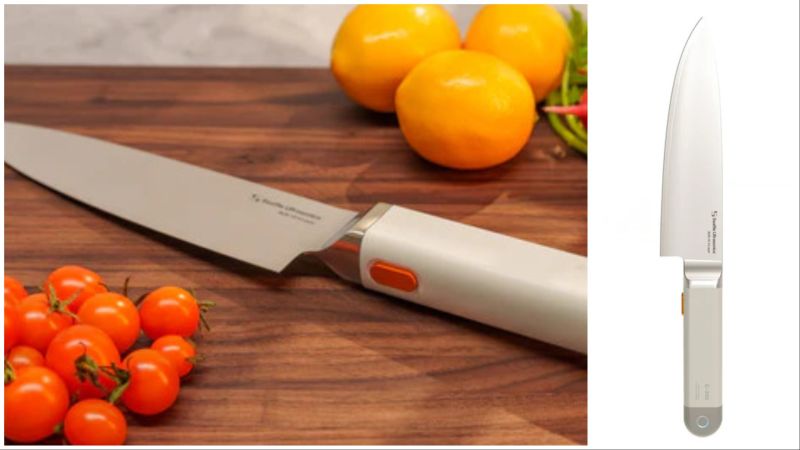Chefs across the world are rushing to buy a new gadget that promises to change the way food is prepared: the C-200 ultrasonic chef’s knife, launched by Seattle-based startup Seattle Ultrasonics.
Unlike traditional knives, the C-200 incorporates vibration technology that makes chopping, slicing and dicing easier and faster. With the push of a button, the knife’s blade vibrates 40,000 times per second. These microscopic ultrasonic movements reduce friction, creating a “nonstick effect” that prevents food from clinging to the blade.
According to the company, the knife requires 50% less force to cut through even the densest ingredients, making the process smoother and more efficient.
Scott Heimendinger, founder of Seattle Ultrasonics, described the innovation as a breakthrough in everyday cooking:
“Just with the push of a button, the ultrasonic knife generates over 40,000 vibrations per second. This leads to less friction, smoother cuts, and a dramatic reduction in the effort required.”
Game-changer for chefs
The knife, priced at $399, has been marketed as the world’s first ultrasonic chef’s knife and is being rapidly adopted by both professional chefs and home cooks seeking precision and efficiency.
Early reactions from the culinary community have been enthusiastic. Chefs say the blade’s smooth motion not only improves the speed of food preparation but also enhances presentation, producing cleaner slices of meat, vegetables and delicate items such as sushi or pastry.
For professionals, the technology may reduce the risk of strain from repetitive chopping, a common occupational hazard in commercial kitchens.
How it works
The design of the C-200 resembles any high-quality chef’s knife, with a sleek stainless-steel blade and ergonomic handle. The difference lies in the power button embedded in the handle, which activates ultrasonic waves transmitted along the blade.
The resulting micro-vibrations are invisible, inaudible and imperceptible to the touch, but they allow the knife to move through food with minimal resistance. The mechanism also prevents sticky foods — such as cheese, potatoes or fresh herbs — from adhering to the blade, a frequent frustration for cooks.
Wider implications
The launch of the C-200 reflects a growing trend of technology reshaping kitchens, with innovations once reserved for industrial settings entering domestic cooking. Tools such as smart ovens, automated mixers, and now ultrasonic knives, are being marketed to home chefs who are increasingly eager to adopt professional-level equipment.
However, questions remain about whether such high-tech devices can justify their cost for the average consumer. At nearly $400, the C-200 is priced well above most premium knives. Critics suggest it may appeal mainly to culinary professionals and enthusiasts rather than everyday households.
Nevertheless, Seattle Ultrasonics says demand has been strong since the launch, with orders coming in from across the United States, Europe and Asia.
The company is also exploring further applications of ultrasonic technology in kitchenware, raising the possibility of a new generation of tools designed to reduce effort and improve precision in food preparation.
As Heimendinger summed up: “Technology is not just about convenience — it can transform the way we connect with food, making cooking more enjoyable and less of a chore.”

